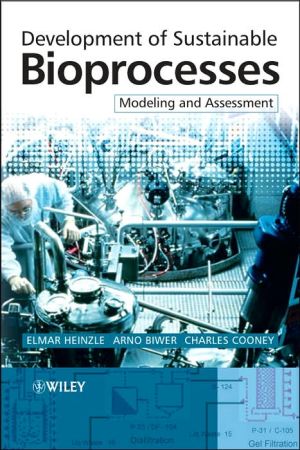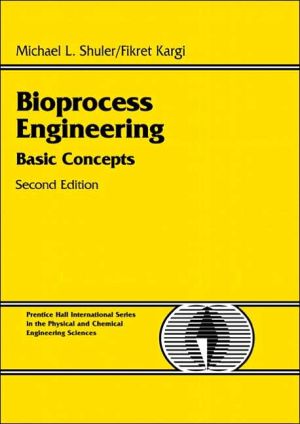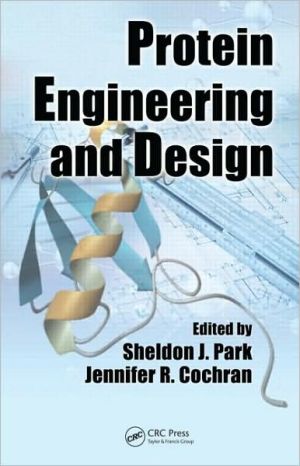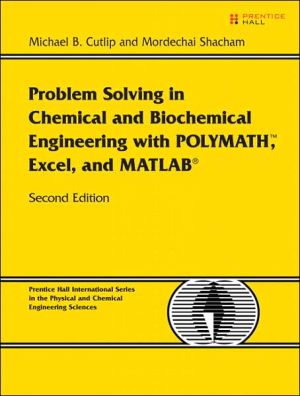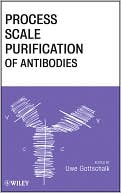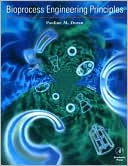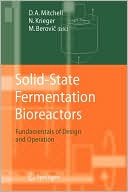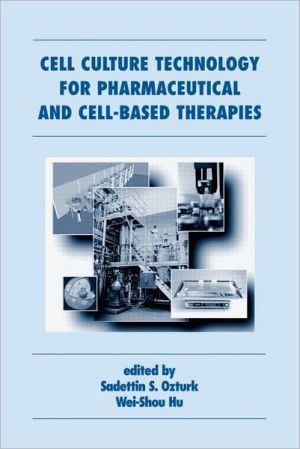Development of Sustainable Bioprocesses: Modeling and Assessment
Bioprocess technology involves the combination of living matter (whole organism or enzymes ) with nutrients under laboratory conditions to make a desired product within the pharmaceutical, food, cosmetics, biotechnology, fine chemicals and bulk chemicals sectors. Industry is under increasing pressure to develop new processes that are both environmentally friendly and cost-effective, and this can be achieved by taking a fresh look at process development; - namely by combining modern process...
Search in google:
This book provides a framework for the development of sustainable bioprocesses. It includes methods for modeling and assessing both the economic and environmental aspects of biotechnological processes and illustrates their application in a series of case studies covering a broad range of products. The book:provides, in four chapters, an introduction to bioproducts and bioprocesses and the unit operations involved in manufacturing, as well as bioprocess modeling in combination with economic and environmental assessment methods;cuts across multiple process industries, including pharmaceutical, biochemicals, chemicals and food production;addresses risk and uncertainty analysis which are particularly important in early process and product development;presents a unique set of case examples from various parts of biotechnology that improve the understanding of this technology and provide a starting point for developing a specific model. The CD-ROM included contains the process models described in the text. All process model examples are implemented into SuperPro Designer ä. The models are selected as characteristic examples of major bioprocess applications including bulk bio-chemicals, fine chemicals, enzymes, low and high molecular weight pharmaceuticals. Topics covered are: Citric Acid, Pyruvic Acid, L-Lysine, Riboflavin – Vitamin B2, α-Cyclodextrin, Penicillin V, Recombinant Human Serum Albumin, Recombinant Human Insulin; Monoclonal Antibodies, α-1-Antitrypsin from Transgenic Plant Cell Suspension Cultures and Plasmid DNA production. These examples provide a hands-on-approach, which will be useful to both students and professionals already working in bioprocess industries. This book provides an integrating framework for the student in chemical and biochemical engineering and the scientist and engineer engaged in process development working in the biochemical, chemical and process industries, as well as biologists, chemists, environmental managers and business economists. The authors acknowledge the sponsorship of the Deutsche Bundesstiftung Umwelt, Osnabrück, Germany.
Preface xiiiAcknowledgments xviiList of Contributors xixTheoretical IntroductionIntroduction 3Bioprocesses 3History of Biotechnology and Today's Situation 3Future Perspectives 6Modeling and Assessment in Process Development 7Development of Bioprocesses 11Types of Bioprocess and Bioproduct 11Biocatalysts and Process Types 11Raw Materials 17Bioproducts 20Bioreaction Stoichiometry, Thermodynamics, and Kinetics 23Stoichiometry 23Thermodynamics 28Kinetics 29Elements of Bioprocesses (Unit Operations and Unit Procedures) 32Upstream Processing 33Bioreactor 36Downstream Processing 40Waste Treatment, Reduction and Recycling 50The Development Process 52Introduction 52Development Steps and Participants 53Modeling and Simulation of Bioprocesses 61Problem Structuring, Process Analysis, and Process Scheme 62Model Boundariesand General Structure 62Modeling Steps 63Implementation and Simulation 66Spreadsheet Model 66Modeling using a Process Simulator 66Uncertainty Analysis 71Scenario Analysis 72Sensitivity Analysis 73Monte Carlo Simulation 75Sustainability Assessment 81Sustainability 81Economic Assessment 82Capital-Cost Estimation 83Operating-Cost Estimation 88Profitability Assessment 94Environmental Assessment 95Introduction 95Structure of the Method 96Impact Categories and Groups 99Calculation of Environmental Factors 103Calculation of Indices 105Example Cleavage of Penicillin G 105Assessing Social Aspects 107Introduction 107Indicators for Social Assessment 108Interactions between the Different Sustainability Dimensions 112Bioprocess Case StudiesIntroduction to Case Studies 121Citric Acid - Alternative Process using Starch 125Introduction 125Fermentation Model 125Process Model 128Inventory Analysis 130Environmental Assessment 132Economic Assessment 134Conclusions 135Pyruvic Acid - Fermentation with Alternative Downstream Processes 137Introduction 137Fermentation Model 137Process Model 138Bioreaction and Upstream 138Downstream Processing 141Inventory Analysis 142Environmental Assessment 144Economic Assessment 145Conclusions 145L-Lysine - Coupling of Bioreaction and Process Model Arnd Knoll Jochen Buechs 155Introduction 155Basic Strategy 156Bioreaction Model 156Process Model 159Coupling of Bioreaction and Process Model 162Assumptions 163Results and Discussion 164Riboflavin - Vitamin B[subscript 2] Wilfried Storhas Rolf Metz 169Introduction 169Biosynthesis and Fermentation 170Production Process and Process Model 171Upstream Processing 172Fermentation 174Downstream Processing 174Inventory Analysis 174Ecological Assessment 175Economic Assessment 176Discussion and Concluding Remarks 177[Alpha]Cyclodextrin 181Introduction 181Reaction Model 182Process Model 182Solvent Process 182Non-solvent Process 184Inventory Analysis 185Environmental Assessment 186Economic Assessment 186Conclusions 189Penicillin V 193Introduction 193Modeling Base Case 193Fermentation Model 193Process Model 194Inventory Analysis 196Environmental Assessment 197Economic Assessment 197Monte Carlo Simulations 198Objective Functions, Variables, and Probability Distributions 198Results 201Conclusions 206Recombinant Human Serum Albumin M. Abdul Kholiq Elmar Heinzle 211Introduction 211Bioreaction Model 212Stoichiometry 212Multi-stage Fermentation and Feeding Plan 213Total Broth Volume in Production Scale and Raw Material Consumption 214Process Model 215Bioreaction 215Downstream Processing 215Economic Assessment 218Ecological Assessment 219Conclusions 221Recombinant Human Insulin Demetri Petrides 225Introduction 225Two-chain Method 226Proinsulin Method 226Market Analysis and Design Basis 226Process Description 227Inventory Analysis and Environmental Assessment 233Production Scheduling 234Economic Assessment 235Throughput-Increase Options 237Conclusions 238Monoclonal Antibodies 241Introduction 241Process Model 241Inventory Analysis 243Economic Assessment 245Environmental Assessment 246Uncertainty Analysis 247Scenarios 247Sensitivity Analysis 248Monte Carlo Simulations 249Conclusions 255[Alpha]-1-Antitrypsin from Transgenic Plant Cell Suspension Cultures Elizabeth Zapalac Karen McDonald 261Introduction 261Process Description 263Model Description 263Discussion 265Conclusions 268Plasmid DNA Sindelia S. Freitas Jose A. L. Santos D. Miguel F. Prazeres 271Introduction 271General 271Case Introduction 272Process Description 272Model Description 275Bioreaction Section 275Downstream Sections 276Inventory Analysis 277Economic Assessment 278Environmental Assessment 281Discussion 282Conclusions 283Index 287
